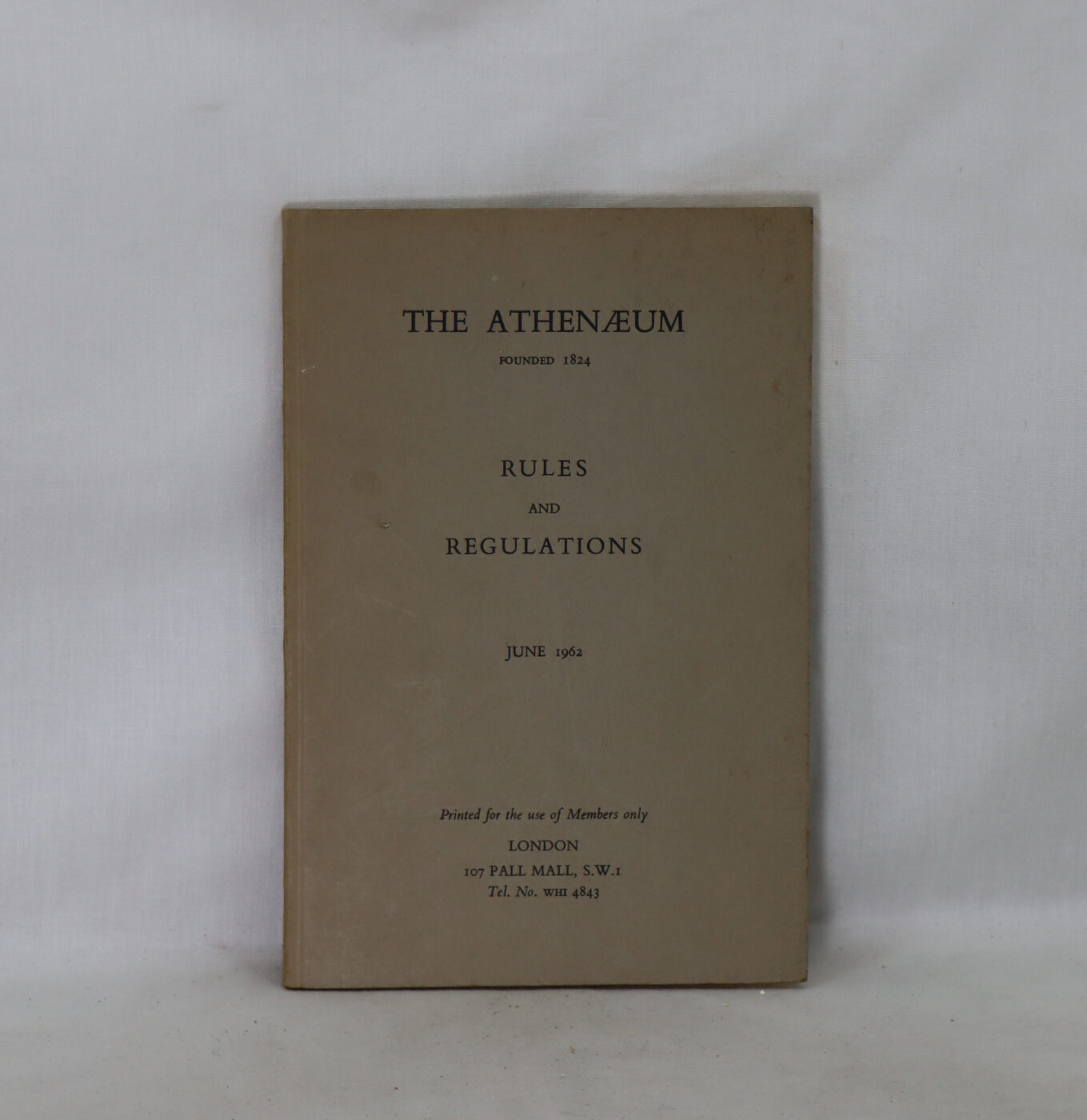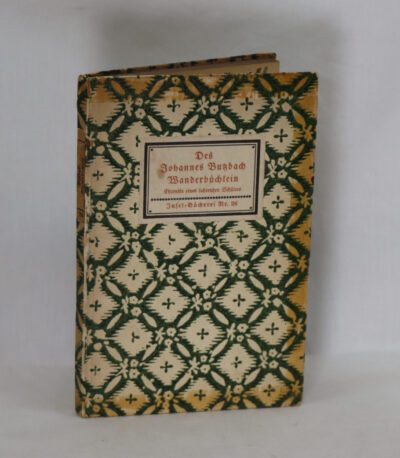The Athenaeum. Rules and Regulations.
Printed: 1962
Publisher: The Athenaeum. London
| Dimensions | 13 × 19 × 0.5 cm |
|---|---|
| Language |
Language: English
Size (cminches): 13 x 19 x 0.5
Condition: Very good (See explanation of ratings)
Your items
Item information
Description
Paperback. Beige boards with black title.
We provide an in-depth photographic presentation of this item to stimulate your feeling and touch. More traditional book descriptions are immediately available
Note: This book carries a £5.00 discount to those that subscribe to the F.B.A. mailing list
Due to its nature, this is a very rare publication which gives one a glimpse of the current privilege of the British well to do. Possession and ownership has its own ‘snob value’ providing you with an excellent talking point.
The Athenaeum is a private members’ club in London, founded in 1824. It is primarily a club for men and women with intellectual interests, and particularly (but not exclusively) for those who have attained some distinction in science, engineering, literature or the arts. Humphry Davy and Michael Faraday were the first chairman and secretary and 51 Nobel Laureates have been members. The clubhouse is located at 107 Pall Mall at the corner of Waterloo Place. It was designed by Decimus Burton in the Neoclassical style, and built by the company of Decimus’s father, James Burton, the pre-eminent London property developer. Decimus was described by architectural scholar Guy Williams as “the designer and prime member of the Athenaeum, one of London’s grandest gentlemens’ clubs”. The clubhouse has a Doric portico, above which is a statue of the classical goddess of wisdom, Athena, from whom the club derives its name. The bas-relief frieze is a copy of the frieze of the Parthenon in Athens. The club’s facilities include an extensive library, a dining room known as the coffee room, a Morning Room, a drawing room on the first floor, a restored smoking room (smoking is no longer permitted) on the upper floor, and a suite of bedrooms.
The new building was complete by early 1830 and the first general meeting was held there on 30 May 1830. In the same year the rules of the club were amended by the addition of a new Rule 2, which allowed the Committee to elect each year not more than nine persons “of distinguished eminence in science, literature or the arts”. This rule has always been a special feature of the club and, with the addition of the words “or for public service”, remains in force today. Ordinary members were elected by ballot (until 1935). The Duke of Wellington was a founding member of the club and the stone installed at his request to assist him in mounting his horse can still be seen on the pavement outside the front porch.
After the completion of the building there was a cash deficit of some £20,000 and in 1832 it was decided to bring in 200 supernumerary members, half selected by the committee and half elected by the club. This restored the finances for the time being, but additional expenditure was soon required to improve the ventilation of the clubhouse and because of recurrent troubles with the gas lighting (it was one of the first buildings to be lit by gas) and it was decided in 1838 to increase the permitted number of members to 1,200, which made it necessary to elect a further 40 members. These became known as the “Forty Thieves” and comprised some very distinguished men including Charles Dickens and Charles Darwin.
The number of members was still 1,200 when Humphry Ward published his history of the club in 1926, but has subsequently been increased to 2,000. There was always a long waiting list in the 19th century and the earlier years of the 20th century.
Want to know more about this item?

Related products
Share this Page with a friend










